What vehicles birthed Porsche’s iconic track-focused brand?
The Porsche name is iconic. It has been woven into the history books as one of the greatest marques of all time. The sports car brand has become synonymous with creativity, performance and general excellence. Its diverse range of models and ideas has created some legendary machines and helped the company to venture from humble beginnings to the automotive giant that we see today.
Over the years, they have achieved some, frankly, mind-bending feats in engineering, design and, crucially, in motorsports. It was this very endeavour into merging both race car and road car which created some of their most legendary vehicles to date: the always superb Porsche GT cars. The GT name has been invoked since very near the beginning of the brand and remains to this day, but in a very different form. It is worth mentioning the entrants into this exclusive club of automobiles and having a deeper look at some of the lesser known slices of Porsche’s genius, which went on to create the brand that we see today.
Early GT Cars
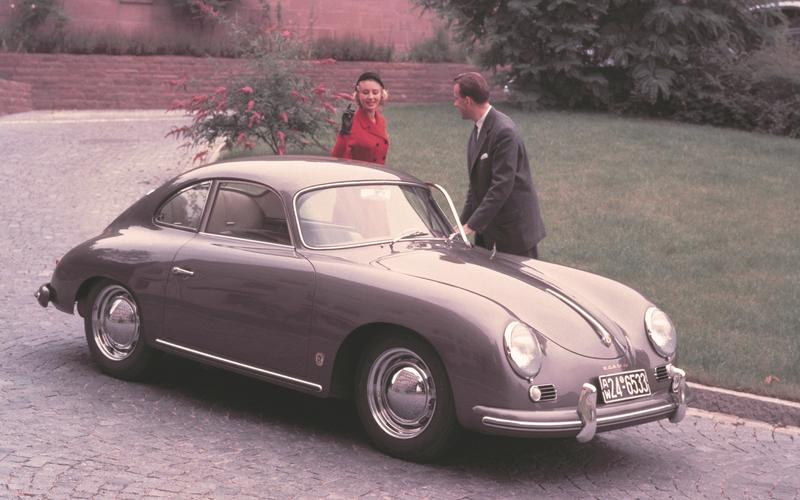
Porsche’s venture into blurring the line between road car and race car began with one of their first and most iconic models – the remarkably chic Porsche 356. Specifically, it was the 356A 1500 Carrera GT. This small project set the precedent for Porsche GT cars which can be directly traced to the vehicles coming out of the Weissach facility today. The engineers engaged in three key practices which altered the character of their cars, making them sportier and performance driven. Firstly, they increased the power of the flat-4 engine; it wasn’t a huge change in numbers, but it was enough to make the car feel different. Next, they put the 356A on a strict diet – key features like the windows were swapped out for lighter materials whilst others were removed entirely. Finally, and most pivotally, they added the braking system from their RS race car. This was important as it was the beginning of the blend of both race and road car parts. These three factors in the development of the first GT cars were fundamental to how Porsche went about designing their track-focussed vehicles to this day. No, their modifications were not as extreme as they are at present, but it was the start of something great.
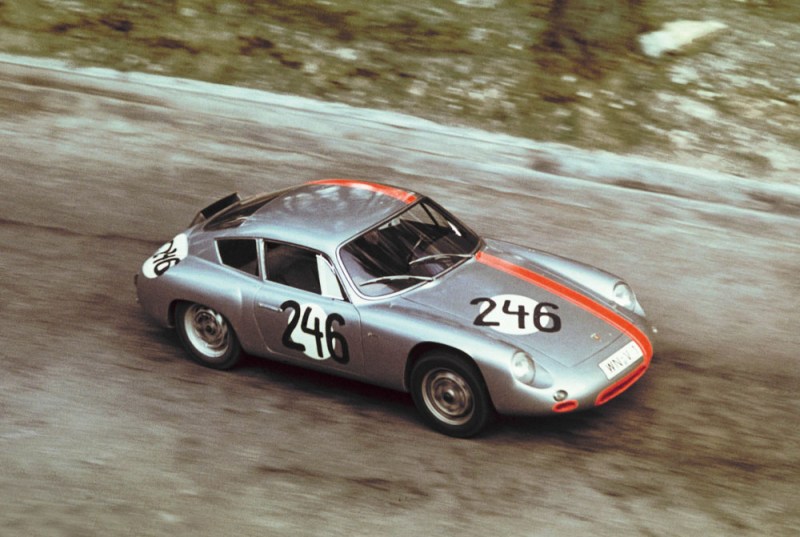

This trend continued when their 356B got its own sporty update. They contracted Italian sports car brand Abarth to build an aluminium bodied vehicle, which was completely bespoke and much smaller and lower than the standard car. They shaved off 100kg, helping them to win the Targa Florio in 1960. Later on, the 356B 2000 Carrera GT came along and built off of the previous model; it got a larger 2.0 Litre engine (hence the name) and mechanical parts were shared with their race winner from the 1963 Targa Florio. This was a proper race car for the road and it appealed to the amateur racer with its more powerful engine and variable gearing.
STEPPING UP THE TWEAKING
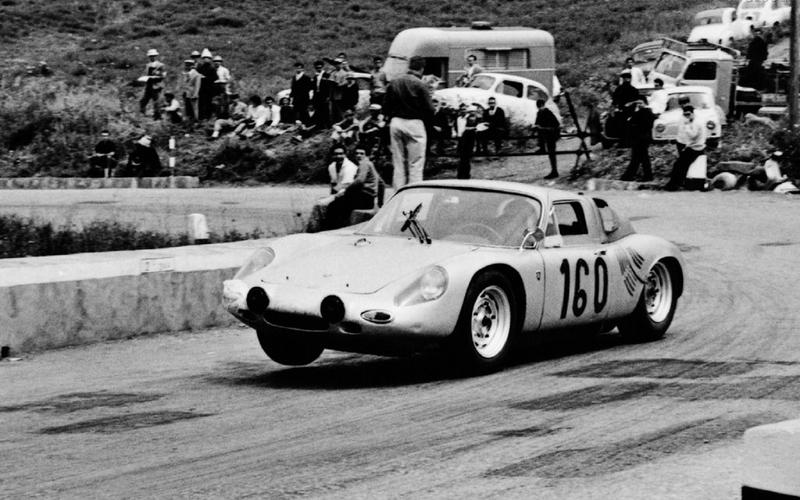
From then on, they continued to fettle with whatever model they could get their hands on. The 1960s saw the 718 GTR where Porsche’s engineers modified the 718 RS race car; they turned it into a coupe to qualify for the GT racing series instead of open-top sports car racing. They swapped in the engine from their Formula 1 and Targa Florio race cars, adding an extra four cylinders to the 1.7 litre flat-4 engine that came as standard.

Next came the 904 GTS, only 100 examples were ever made for it to qualify for GT racing and rallying (which they were very successful in). The design was basic yet clever; they enhanced structural strength and increased power to up to 180BHP. The chassis was made with twin steel box sections, bonded with a glassfibre body. Meanwhile, the final iteration of their flat-4 engine was installed. This car is one of my personal favourites on this list as its design oozes retro Porsche – they manage to blend the charisma of a lightweight sports car with the pedigree of a legendary racer in one stereotypically 1960s package.
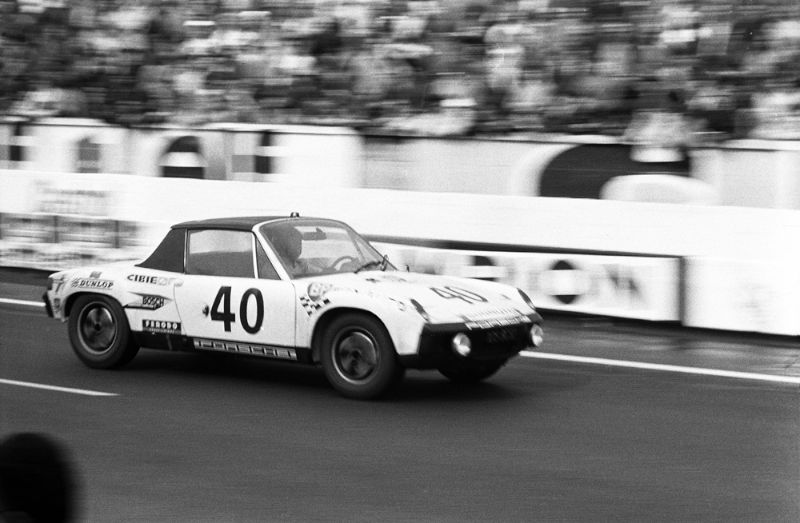
In 1970, their 914/6 GT debuted as a factory extension to their 914 Targa-top. It was based on their flat-6 platform; it came in two variants with the standard 2.0 Litre engine and the bigger engined option from the 911. As well as the engine, the GT option had flared wheel arches, glassfibre body panels, 16-inch Fuchs alloys, an oil cooler and adjustable dampers for a sportier ride.

They stepped up their game in the 1980s with a homologated version of their 924 Carrera dubbed the GT. The 200 Horsepower Group 4 race car for the road spared no expense when it came to looking brooding and racy; there was boxy, flared wheel arches, more ducting and air vents, and the stylish pop-up headlights were removed. GTS and GTR versions came later, which were even more hardcore with increased power and aero.

The GT name was used in their 928, but in a different way. They wanted this grand tourer to replace their famed 911 (though, obviously, this didn’t happen) and so fitted it with a meaty 5.0 Litre V8 and 330BHP. Performance was ample, to say the least, but not enough to sway buyers away from the 911. Porsche later released the GTS model which had a 5.4 Litre engine with an extra 20BHP and a very subtle colour coded rear wing.
Despite their impressive catalogue of cars which had been reworked to GT specification, there was one looming vehicle which they had yet to touch. The holy grail of Porsche and, arguably, of the sports car world had not yet been given the Gran Turismo treatment. Yes, the 911 had to wait until the turn of the 1990s to be admitted into this exclusive club which payed no attention to fuel economy or practicality and focussed on all-out performance.
The 911
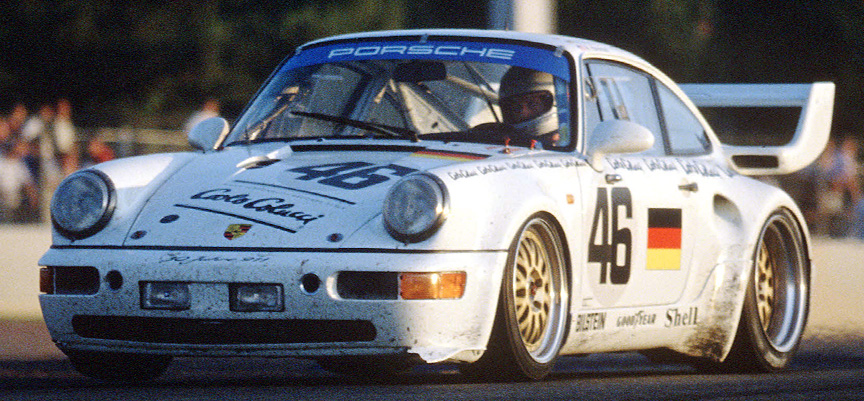
Our story continues with endurance racing; Porsche re-entered the scene with all of their might and created the 964 Turbo LM-GT. The track-only vehicle was not part of the conventional group of track cars for the road but it was the first 911 to wear the GT badge, so it’s certainly worth mentioning. It was based on their already impressive road car, which sported their masterfully crafted 3.2 Litre flat-6; the twin-turbo engine made a crazy 475BHP. It was later more tightly regulated and detuned to a respectable 360BHP – despite the loss in power, they increased engine capacity to 3.6 Litres, utilising the new power unit from the 993 generation of the 911.
The vehicle itself looked like a retro spaceship with ridiculous aerodynamic modifications: there was a new chin spoiler, extra venting and a huge adjustable wing which was put on top of the standard Turbo spoiler. The wider rear arches allowed for broader, grippier tires to be fitted. A lightweight approach was key as they stripped the interior and fitted a roll cage and plexiglass windows. This all made a difference in racing with multiple class victories and an overall second place in the Daytona 24 Hours. The development and success of this car inspired the creation of a Porsche cult-classic which kick-started the formation of the GT brand: the 911 (993) GT2
THE GT2

The 993 generation of the Porsche 911 GT2 was a homologation race car built for the GT2 race class of sports car racing. It is one of the most adored 911s ever made, which also makes it one of the most valuable. The 57 road going examples were badged simply as the 911 GT – it was Porsche’s ultimate GT car thus far. An aggressive 424HP (later increased to 444HP) air-cooled twin-turbo flat-6 was paired to a silky smooth six-speed manual gearbox to deliver the most engaging driving experience.
The extremely wide and fashionable bolt-on plastic fenders were paired with extra aerodynamic tweaks such as an aptly large rear wing with some iconic built-in air scoops. It handled superbly and delivered power effortlessly with performance statistics that could rival some of the vehicles being pumped out of the Stuttgart-based company’s production lines today.
In racing, the car was modified for optimum performance with a stripped interior and some suspension and engine tweaks which generated a monstrous 450 Horsepower. The results on track were notable; several podiums and a couple of wins across its lifespan proved that this car could handle the track commendably.
Though, not as well as its rarer and more extreme brethren from the GT1 class.
THE GT1

Yes, the awesome racer that Porsche built to compete at the top class of Le Mans very quickly took the top spot as not only one of the best Porsches, but one of the best cars of the time. The BPR Global GT1 Championship was graced with the ridiculous mid-engined 911 GT1 in 1996; it was a full-blown homologated race car built to fight the competition from the likes of McLaren and Ferrari. Unlike its competitors, who used heavily modified road car to race with, the GT1 had a different interpretation of the rules; it was a purpose built racer manufactured from the ground up with the sole purpose to win the most prestigious endurance race of the year: Le Mans.
Put shortly, they wanted to build the fastest race cars that they could, whilst retaining the spirit of the 911. The man that headed the project was a very successful Porsche engineering legend by the name for Norbert Singer. He had been with Porsche since 1970 and throughout his career garnered an astounding 16 Le Mans wins with vehicles like the 956 and 962 Group C cars being attributed to his genius. More recently, he was a consultant on the Dynamics and Lightweighting Study (DLS) from Singer Vehicle Design, which is, unsurprisingly, restomodding genius. The correlation of the Singer name is no coincidence, it is an homage to Norbert’s work over the years with Porsche.

Singer won his last Le Mans with the GT1. His team mated the front half of a 993 911 with the rear half of a 962 race car, holding it together with a tubular frame and coating it with a full carbon fibre body. The 3.2 Litre, water-cooled, twin-turbo flat-6 (which went in the middle) produced an ample 592HP and, when paired with the the weight curb weight of 1050kg, hauled the GT1 down the Mulsanne straight at 205mph – in 1996! This first attempt at Le Mans was where it scored a second and third place position overall and a GT1 class victory. It easily won its debut sports car race at Brand Hatch and later took the victory at Spa in the same year. By this point, only 2 prototype road cars had been built and were yet to meet the homologation quota.
With the introduction of the FIA World GT Championship in 1997, the GT1 was revised with the 911 GT1 Evo being released. It had newer, aerodynamic bodywork changes and resembled the new 996 generation of the 911. It failed to finish the 1997 Le Mans race, despite leading for most of it; though, a privateer team did achieve an overall finish of fifth and third in class. It is not the racing that is important in 1997, but the road cars that came as a result. Dubbed the Straßenversion (street version), these vehicles were created to satisfy the rules of homologation for the class. According to Porsche, only 21 of the 25 required cars were ever built and today they would fetch a hefty ten million dollars or more at auction. The slightly detuned engine produced 536HP with a curb weight of 1150 kilos and a laudable top speed of 191mph. Most of these road vehicles were based on the 1997 version of the car, excluding the two 1996 prototypes and the singular GT1-98 Straßenversion chassis which was adapted for the new version of the race car in 1998.
Speaking of which, 1998 was a key year for the GT1 as it finally achieved the overall victory at Le Mans. A full carbon fibre chassis shed considerable weight to create the most hardcore version of this exquisite 911. Reliability was the key part of the race because the GT1’s, potentially more competitive, rivals from Mercedes, BMW and Toyota all suffered from mechanical problems. This paved the way for Porsche to secure a 1-2 overall finish for the final year of the GT1 Championship. The 911 GT1 is a supremely special car; it’s heralded as the most extreme incarnation of the 911 and it holds a special place in Porsche enthusiast folklore.
THE BUILDING OF A GT BRAND

These vehicles solidified the foundations of the Porsche GT car brand and only emphasised Porsche’s skill at building a road car designed to conquer the track. So, in 1999, they introduced the first in a line of high-performance cars, the 911 (996) GT3.
Interestingly, Hartmut Kristen and Roland Kussmal, who first fathomed the GT3, almost didn’t get permission to build the vehicle as Porsche thought that it would hurt the brand. In hindsight, this couldn’t have been further from the truth.
Though, it wasn’t entirely naïve – Porsche wasn’t as economically secure as it is today. If it wasn’t for the introduction of the Boxster, 996 generation 911 and later the Cayenne, they may not have survived. The company was concerned about costs and was not as flamboyant or outrageous as it had formerly been; so it was particularly surprising when Kristen and his peers got the green light to build a feisty track-toy.

In construction, they paid homage to the original vehicles by sticking to the same ethos; the removal of sound-deadening, air conditioning and the sunroof lightened the vehicle whilst an upgraded Mezger engine, which was changed to a water cooled unit, provided 355HP. The optional Clubsport package came with a single mass flywheel, racing seats and half roll cage (similar to how it’s optioned today). The aerodynamic package was functional and aesthetically pleasing to say the least; of the varied crop of early 2000s supercars, this GT3 has aged the best. It was fast yet nimble, dramatic yet understated; journalists and buyers alike loved this car because it harked back to why Porsche was such a great marque, why the enthusiasts fell in love with them to begin with. The first generation was much more successful than originally forecasted and so the second generation was more than encouraged.

The final car built that used the GT name without being based on an existing 911 platform was the ferocious Carrera GT. This unique creation from Porsche was a project of ideal circumstance which encompassed a range of technical feats that had rarely been seen before. It is most famous for its F1-derived 5.7 Litre V10 engine which produced a spine-tingling sound that can only be categorised as a supernatural shriek. Following this, there was a full carbon fibre monocoque and a six-speed manual transmission, which was famous for its balsa wood gear knob. The meticulous details included a notoriously sticky clutch, carbon ceramic brakes and aluminium wheels, which had different coloured centre-locking wheel nuts for either side of the car (blue on the right, red on the left). The concept was revealed in Paris, in 2000, to a collective of stupefied journalists with Walther Röhrl at the wheel; the eagerly awaited production model came 3 years later to great acclaim from the car world. This ultimate embodiment of Porsche’s road-race philosophy put the final piece of the puzzle in building their GT brand.
It was at this point when the beloved GT car range was officially secure. The Gen 2 GT3 was more advanced than the first and Porsche’s engineers slowly refined their method until we reach the engineering masterpiece that is the 992 GT3 that we see today. The 996 Gen 2 was more mainstream with sales being made available in the US. Meanwhile, the famous Renn Sport name was brought back with the 996 GT3 RS and the GT2 model also made a return. It was at the same time that Hartmut Kristen, who ran the motorsport department, hired a budding engineer called Andreas Preuninger.

Preuninger is more affectionately known today as “Mr GT”; he has been the overseer of the GT range since his arrival in 2000 (just after the Gen 1 GT3). He is, first and foremost, a Porsche fanatic and his appointment was somewhat of a dream job. He changed the face of Weissach and the GT department, making every car into a genuine, high-quality passion project. Creating a new GT is an event for him and his team; the emotion and time that they pour into their designs is obvious as they have created a respected and beloved institution. He makes a point to build a car off of models which compete in an existing racing series, which makes it easier for them to create a vehicle from an existing platform, instead of having to start from scratch with each model. Furthermore, it highlights the point which I made at the beginning of this article; the blend between the Porsche race cars and road cars can be seen to this day. Preuninger intends to keep the link between existing race series and the road car with which they correlate through parts sharing, similar specifications or, simply, heritage.
These talented designers are the men and women behind the curtain; they are the creators of this adored nameplate. Their astounding CVs boast the creation of Porsche icons varying from the 911 997 GT3 RS 4.0 to the new Cayman GT4 RS. My personal favourite is the wonderful 911 R. Feel free to gawp at it below.





Leave a reply